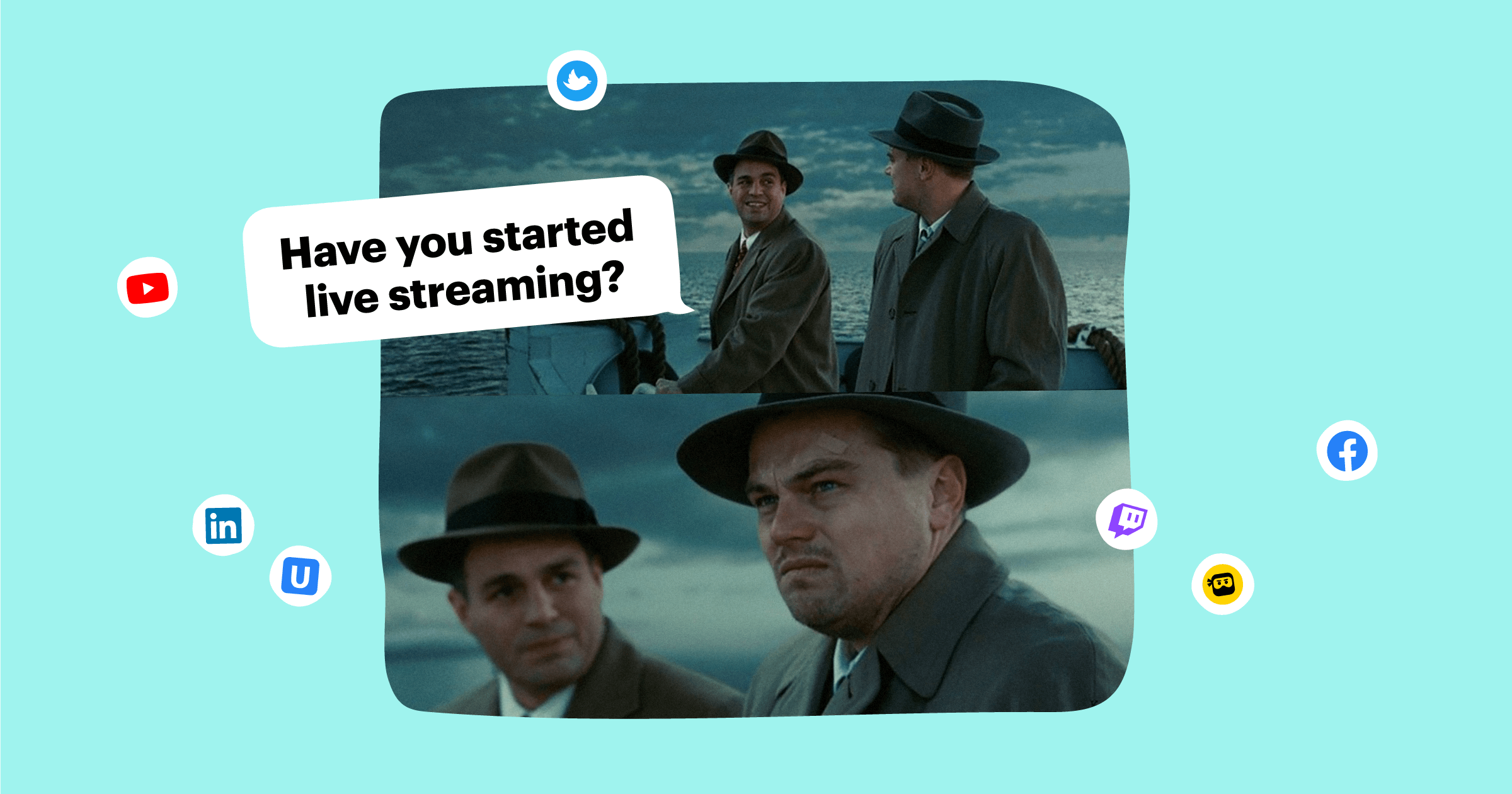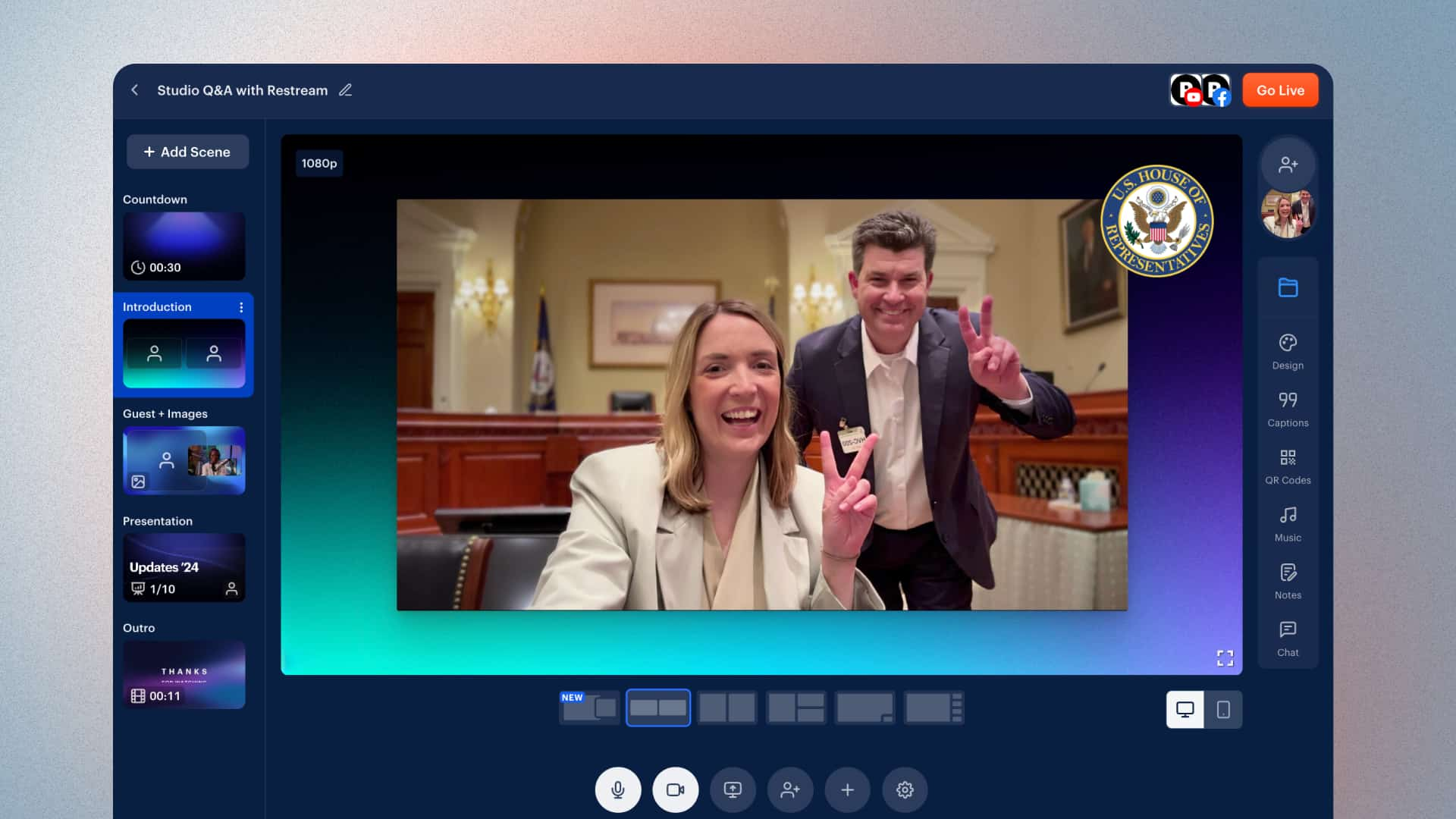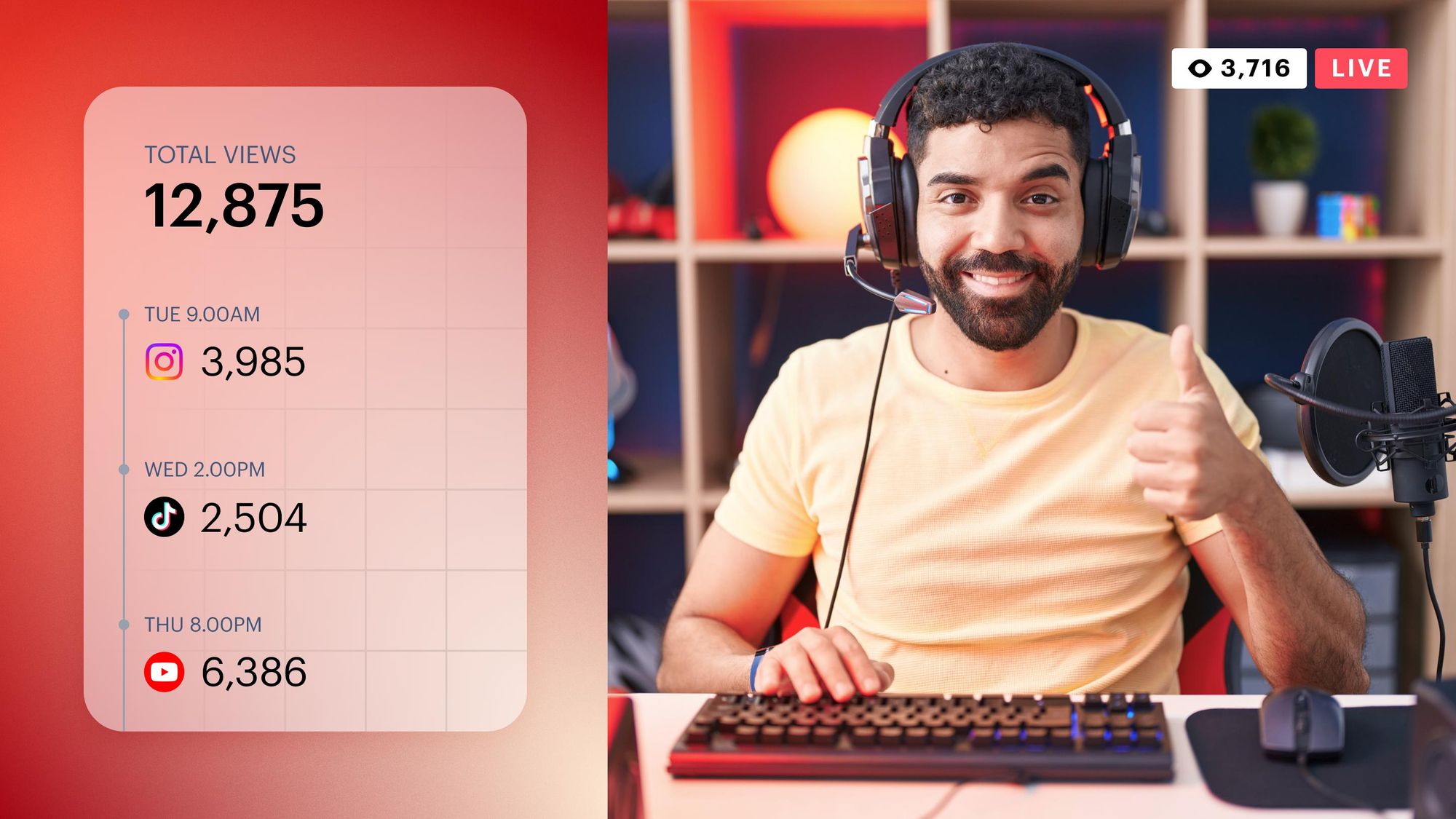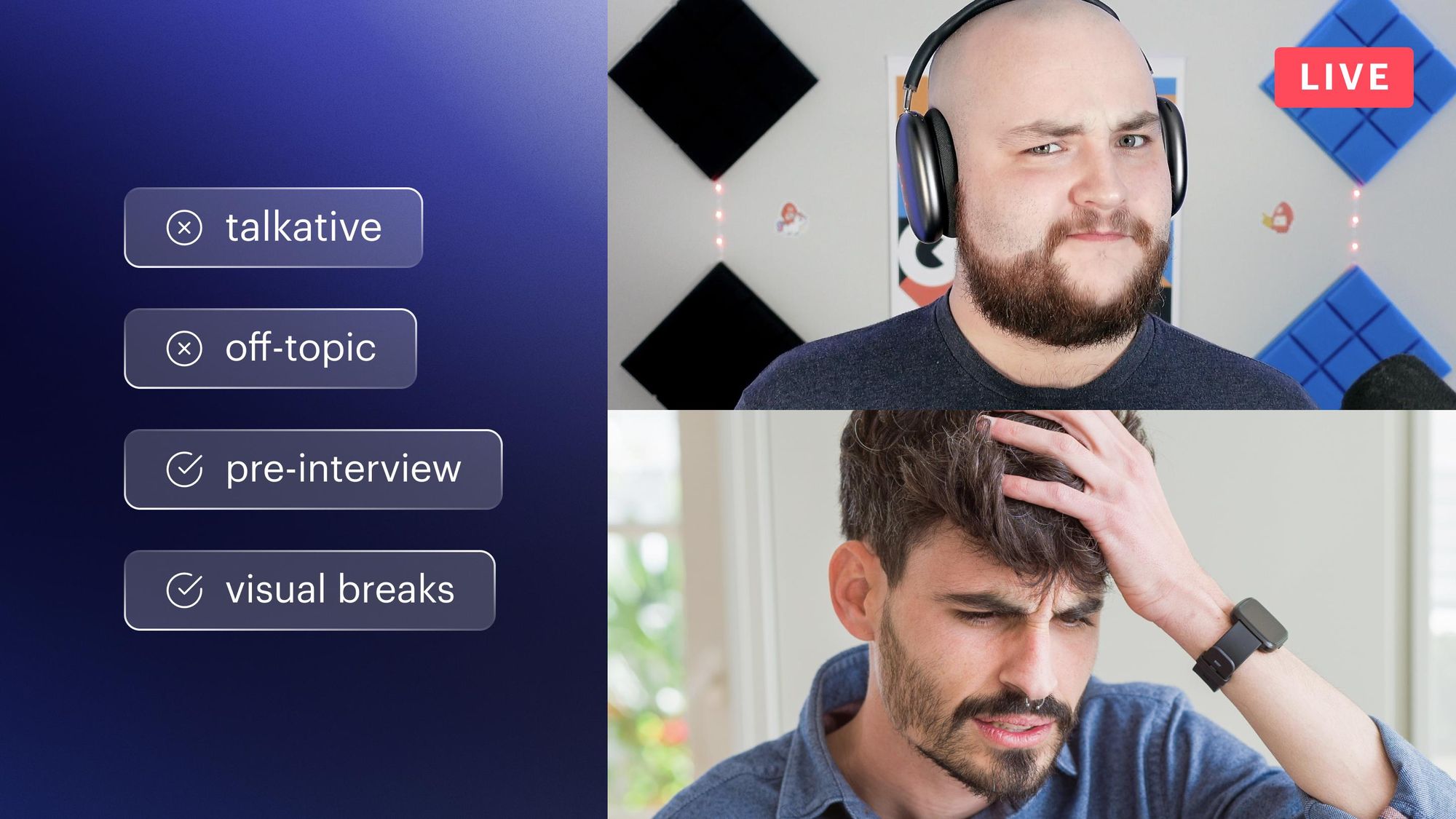Live video keeps breaking into more and more unexpected spheres of our lives.
Audiences around the world watch an average of 16 hours of online video per week — a 52% increase in the last two years. Video has been especially relevant during this year’s global lockdowns and widespread remote working, as people need to connect and stay engaged more than ever before.
Innovative content creators are already using live video to engage with their audiences on a regular basis. For some, live streaming still looks like a big leap to take. Different misconceptions about live streaming being expensive or too complicated to set up persist. Fears of being live with no one watching or simply looking awkward in front of the camera don’t help out either.
In this post we'll debunk some live streaming myths and show you that live streaming in 2020 is super easy. Without further ado, let's start.
1. Live streaming is expensive
It’s possible for live streaming to overrun your budget if you insist on having only the best equipment. High-quality streaming requires investments in top-notch webcams, microphones, and lighting fixtures.
Alternatively, you can keep the cost of your live streaming low and go with a basic streaming setup. A regular USB microphone or a small Lavalier microphone by Mosotech are wonderful options for beginners — they offer affordable prices and relatively good sound. Microphones like the Blue Yeti USB or HyperX QuadCast will give you more professional sound quality and cost you approximately $130 to $150. The same choice criteria work for video equipment and accessories.
Read more about streaming setups and how to choose one according to your needs.
2. My internet connection isn't good enough for streaming
No one wants to freeze, buffer, or drop off entirely from their streams. As live streaming takes a lot of data, many WiFi connections just don’t have enough bandwidth to process the request.
Maintaining a stable internet connection is a key factor in quality streaming. To accomplish this, consider ditching the WiFi and opting for a secure wired connection. Upload speed is another important nuance to prevent internet lags. Facebook is a good place for new streamers to start — with videos up to 720p, you won’t need more than 5 Mbps in upload speed. Twitch is suitable for up to 1080p video at 60 frames per second with an upload speed up to 7.4 Mbps.
Check out more upload speed options to see which one you should be aiming for.
Tip: Run a speed test on your connection. Your internet bandwidth should be fast enough according to the type of content you want to stream and the platform you use for that.
3. Nobody will watch my stream
Live streaming with no one in the audience might seem awkward at first. Still, everything big always starts from scratch. Or do you think renowned streamers like Shroud and Ninja started with a huge base of followers?
The key is to remain patient and consistent in your live streams. Use your first few times to practice, work out the bugs, and get comfortable going live. Don’t hesitate to ask your friends to watch your stream or share some teasers about the upcoming stream on your social media. Stay connected with your first viewers: reach out and ask for feedback, share more useful content beyond the stream, and start building a community around your content.
4. The things I want to talk about are not interesting to my viewers
So you’ve got an idea for your stream — that’s great! Now ask yourself who you want to stream for and what their heads are busy with. Do those ideal viewers’ interests resonate with yours?
If so, great again! Keep exploring and turning your idea into content you will be proud to share. Soon you’ll notice more viewers with similar interests joining your streams. Try to tailor your content even better for your audience. For that, you can reach out to your potential viewers in advance and collect questions they might have about your topic. You might find such people on social media or online communities and invite them to join your streams. Also, research forums such as Reddit or Quora and reach out to the commentators there.
Tip: Take care of your content format. Let it be interactive, entertaining, and informative. Experiment with formats such as Live Q&A, Live Behind the Scenes, or a Product Showcase.
5. I don’t know how to deal with haters
Any good content you create is likely to trigger reactions from your audience — that’s the whole point of sharing it! But this can come with some downsides. Whereas compliments will pump you up and inspire you to create more, negative reactions might pull you down and block your desire to create.
It’s both possible and important to separate healthy criticism from hateful negative feedback. If you find yourself on the receiving end of venomous contempt, don’t take it personally, and don’t start arguments or get defensive. Remember that haters don’t interact with you, they interact with a computer screen. This allows them to change their social habits, such as saying and doing things they would never say or do if you were standing right in front of them. Focus on what you’re doing right in your streams, take the high road, and move on.
6. I will lose my privacy
Once you are live, it might feel like your private life is now on display for all to see. Even though you might frequently post on Instagram or Facebook, live streaming seems far more connected and uncovered.
Implement these basic but crucial steps to protect your privacy and give yourself peace of mind:
- Use a nickname instead of your real name.
- Don’t register your stream-related email address with any other websites.
- Keep your home address and phone number private.
- Use a VPN (virtual private network) to hide the true location of your IP address.
7. I will look unprofessional in front of a camera
Many self-doubts may start sneaking up when you get closer to your stream. What if you get stuck and forget what you are supposed to say? What if your joke fails, or it’s a literal bad hair day?
These thoughts are common, and they will pass. Try not to be so hard on yourself — it’s just a matter of practice and consistency. With every stream, you’ll get better at managing your body language, maintaining eye contact with the audience, and playing up your mistakes.
To gain more confidence during your streams you can start with a few easy steps:
- Practice in front of a mirror.
- Look directly into the camera.
- Try some relaxation techniques before going live — close your eyes and take a few deep breaths. Sit up straight and drop your shoulders. Use the power of positive thought to remind yourself that you are going to do great.
Tip: Imagine speaking to just one person. Don’t think of streaming in front of a large audience, but rather visualize your ideal viewer and think of having a one-on-one conversation with them. It will not only help reduce your fear but will also make you resonate better.
8. I will forget what I want to talk about
Once live, you might become too nervous and start losing your thoughts. What is good here is that your viewers have no clue what you are about to say.
Feel free to improvise and change your content on the go. Communicate with your audience. One of the benefits of watching live videos is that the audience can communicate with streamers directly instead of being lectured all the time. Give people a chance to speak up and, meanwhile, use this time to collect your thoughts and recharge.
It’s also handy to have a baseline to look up to whenever you feel stuck. Back yourself up with some notes:
- bullet points or a rough script of your stream
- questions you can use to engage with your audience
- personal stories and experiences to resonate better
Check out our Discord channel for more live streaming news, insights, and tips. You’ll find lots of like-minded people there!
9. I will fail miserably
Going live is going out of your comfort zone. That’s why messing up is a natural part of the process. Don’t try to be perfect right away. Instead, anticipate and prepare for mistakes.
Some mistakes are easy to avoid simply by getting ready for the stream:
- Know your material and go through your script.
- Get to know your audience and what topics will be relevant for them beforehand.
Set up your streaming equipment:
- Get a feel for the room you’ll be broadcasting from.
- Choose your streaming platforms and the right broadcasting software.
Tip: Run a test stream or do a private broadcast first.
10. I’m not very techy, and live streaming is too difficult
Hosting your first live stream goes hand in hand with tech troubles: slow bandwidth, sound or video issues, external noise, and lag. It’s especially hard to troubleshoot technical issues when you are already live and in front of your viewers.
Support yourself with an easy-to-use live streaming tool to make sure all potential technical issues are under control. Restream provides the perfect solution.
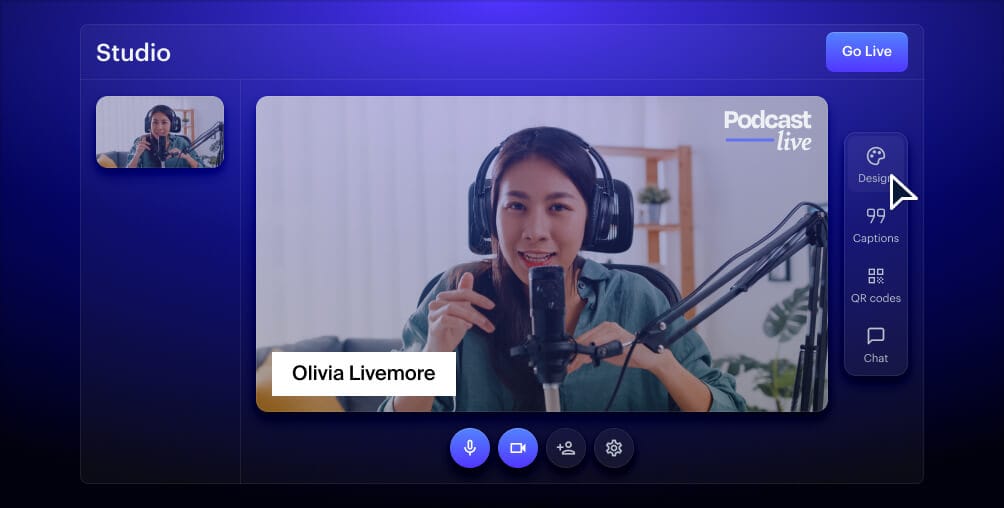
Create stunning live videos
Restream Studio is the easiest way to create high-quality live videos on multiple platforms at once. It's user-friendly and offers an engaging viewer experience.
With Restream Studio you can:
- quickly go live and stream directly from your browser
- get video settings automatically optimized
- use overlays, logos, and background images
- invite guests to the stream
- share your screen with the audience
To truly maximize your audience reach, use Restream Studio to broadcast your live videos on multiple streaming platforms, like YouTube, Twitch, Facebook, etc., at the same time.
With Restream Studio you don’t have to worry about manually adjusting your stream settings and can focus on your content. Simply hit that Go Live button when you are all set!
Let’s wrap everything up
Live video is in high demand, and streaming platforms keep growing their user bases by multitudes. Creators who are ready to jump on the bandwagon now will be perfectly poised for success when the video content domain peaks.
Live streaming might seem scary and expensive at first, but it doesn’t have to be once you’ve debunked some resounding myths:
- Live streaming is not that expensive if you start with a basic streaming setup.
- Preparing your internet connection in advance will help you avoid lags.
- Your audience base will grow over time if you stream consistently and align content with your viewers’ interests.
- Owning up to and correcting your failures and mistakes will eventually turn you into a professional streamer and help you feel at ease when you are live.
Live streaming is really a joyful and simple process. As soon as you start streaming you’ll see that the myths we’ve uncovered are not as scary as you once believed. With the right streaming tools and consistency you’ll climb to the top of that live video bandwagon very soon!

